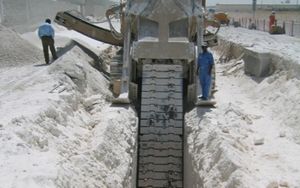(Tiper Stock Exchange) – Tesmeca company listed on Euronext STAR Milan and active in the field of infrastructure construction relating to the transport of electricity, data and materials, closed the first half of 2023 with consolidated revenues equal to 125.3 million euros, an increase compared to 113.3 million euros at 30 June 2022, mainly thanks to the performance of the Energy and Rail sectors. L’EBITDA is equal to 15.2 million euros, a decrease compared to 18.7 million euros at June 30, 2022. In particular, the Trencher sector is negatively impacted, compared to the first half of the previous year, by a different seasonal mix of sales and non-recurring charges.
The Net income as at 30 June 2023 it was negative by 2.6 million euros, generated purely in the first quarter with a second half in substantial breakeven, compared to a profit of 7.9 million euros as at 30 June 2022.
“In the first six months of the year we recorded a significant increase in revenues, especially in the Rail and Energy sectors, thanks to the growing demand for our cutting-edge technological solutions, which facilitate the energy and digital transition – commented theAD Ambrogio Caccia Dominioni – The order book, driven by the Railway and Energy Automation sectors, reached a record value of 428.8 million euros as at 30 June 2023″.
“Despite financial challenges and below-expected margins, we maintain firm determination in pursuing the forecasts communicated to the market for the entire 2023 financial year: an expected turnover between 280 and 290 million euros, an EBITDA margin in the 16%-17% range and an improvement in Net Financial Debt compared to the end of the 2022 financial year – he added – We are confident that we will achieve these forecasts thanks to our consolidated market position, the ability to innovate and the commitment to our customers”.
L’Net financial debt as at 30 June 2023 is equal to 150.3 million euros, compared to 128.4 million euros as at 31 December 2022 and 133.1 million euros as at 30 June 2022, due to the increase in working capital in the sectors strong growth – Energy Automation and Railways – on the basis of sales forecasts for the rest of the year and, partially, due to investments in the period not fully covered by the half-yearly cash flow.
